An inside look at the criminal justice system in PBS’s Philly D.A.
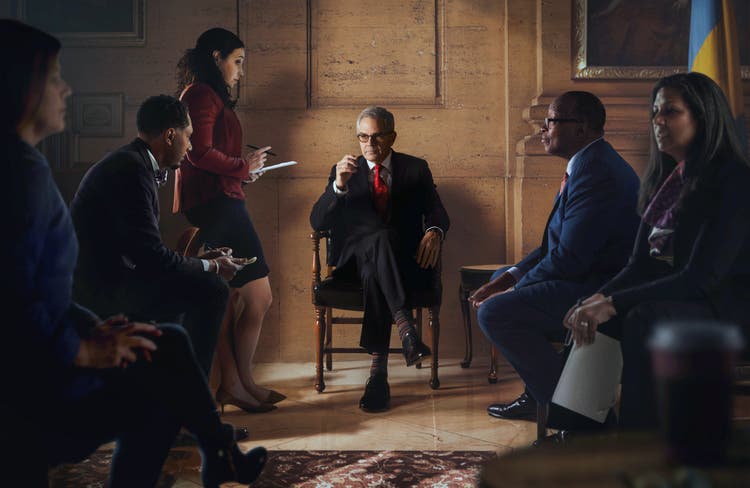
Image Source: Independent Lens.
Making its debut at the 2021 Sundance Film Festival, the Independent Lens docuseries Philly D.A. on PBS follows Philadelphia’s District Attorney, Larry Krasner, as he fights to stay true to his campaign promise of changing the culture of the criminal justice system.
From the eye of this political storm, the filmmakers gained unprecedented access into Krasner’s office and behind the scenes of the criminal justice system. Over the course of eight episodes, the series explores some of the most pressing social issues of our time — police brutality, the opioid crisis, gun violence, and mass incarceration — through the lens of an idealistic team attempting fundamental overhaul from within the system.
We sat down with Philly D.A editor, Dita Gruze, to discuss her path to becoming a documentary editor, sifting through hours of footage to piece together the eight-part docuseries, and how Productions in Premiere Pro made collaboration easier during the edit.
How and where did you first learn to edit?
I was taking an editing course at Temple University when I was studying Film and Media Arts. While the class itself was very basic, I did realize that editing, especially documentary film editing, is something I could get very good at — I loved the attention to detail it requires and how the story for the most part gets crafted in the edit room. Though initially I mostly worked as a producer or assistant director on various short and feature films, I kept working on my editing skills on smaller projects and commercials, until a few years later I completely switched careers and became a full-time documentary film editor.
How do you begin a project/set up your workspace?
Every new project is always a little intimidating because most times it requires a complete topic switch, and it takes a while to reorient myself in the new story world. I try doing that by researching the new topic, learning as much as I can, asking as many questions to the directors as I need to understand what they intend to do with the story, and watching the dailies and taking notes. When it comes time to set up my actual project file, I make sure it is meticulously organized in bins — we all use the same bin naming convention so that it’s easier to navigate each other’s project files if needed. I cover my workstation in post-its where I’d write reminders about useful shots I’ve come across, story ideas, questions to directors, and anything else that might be helpful as I edit. I also have a scratch paper where I’d doodle when I contemplate an edit challenge — it helps me think.
Tell us about a favorite scene or moment from this project and why it stands out to you.
It’s very difficult to pick one favorite scene or moment from a project I’ve been working on for three and a half years, especially when many really great moments didn’t make it into the final edit due to time or storyline constraints. But if I have to pick one that did make it into the series, I’d probably pick Dionne Galloway’s story in episode two. It’s a story about a mother whose son was killed by gun violence, and the accused murderer was released because the detectives had conducted an illegal search. While the main focus here was the police misconduct, I treated the scenes with Dionne and her younger sons with a very delicate approach. Through the shot choice, pacing, music, sound design, and framing (thanks to our brilliant DP, Yoni Brook) I wanted to convey the immense hurt that police misconduct can inflict on victims, and I think I succeeded in that.
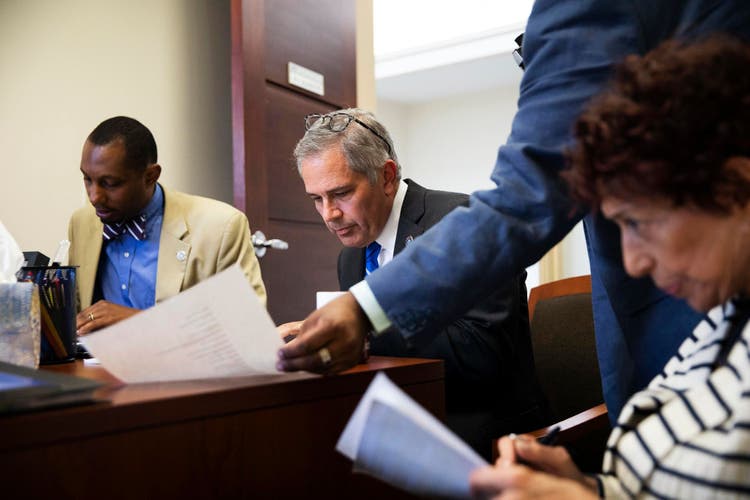
Image Source: Independent Lens.
What were some specific post-production challenges you faced that were unique to your project? How did you go about solving them?
The main challenge was the sheer amount of footage we had shot over three years of production. After about a month of receiving daily footage dump from the directors, I realized that this project is gonna be huge and I better come up with a good organization system before it all spins out of control. So I did — I was meticulous in how I organized the hard drive folders, project files, and synched sequences within the project files. This really paid off when it was time to dive into the real editing phase with ITVS two years later.
Creating an eight-episode series is a huge creative challenge. I collaborated with five other incredibly talented series editors, each of us focusing on one or two episodes. We were supported by several assistant and associate editors, who were syncing footage, organizing our database, and helping create assemblies. We used different apps to work together — storyboarding on Mural, Airtable for managing our footage database, sharing edits on Frame, Dropbox for syncing files, an SNS EVO server system for the terabytes of files, and Adobe Creative Cloud programs for the actual editing and creation. And of course, Zoom, so much Zoom!
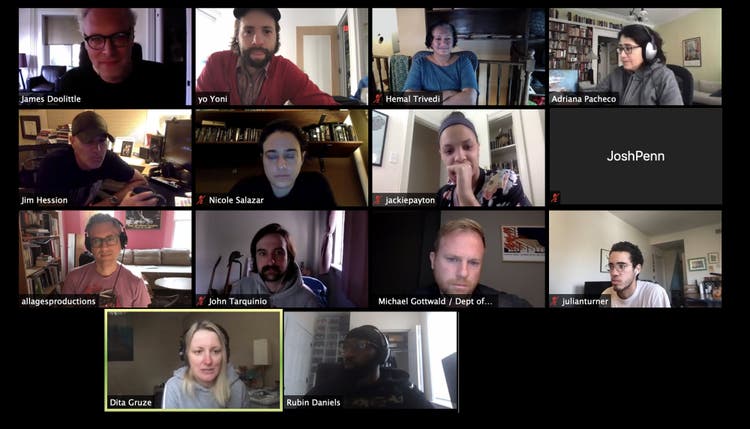
Image Source: Dita Gruze.
What Adobe tools did you use on this project and why did you originally choose them? Why were they the best choice for this project?
I used Premiere Pro — that’s what we’ve always been using at All Ages Productions, and all other editors were proficient with it. It was also a good choice because the directors were comfortable using it, and if push came to shove before tight deadlines, they could jump in to help out with scene rough cuts. Premiere Pro Productions made it easy to collaborate virtually among the editors, assistant editors, and directors, which was essential during the pandemic when we all worked from home.
What do you like about Premiere Pro, and/or any of the other tools you used?
Premiere Pro is very intuitive and easy to use, and over the years I’ve become good at solving technical puzzles if needed. I wouldn’t even know where to begin with other programs. The dark interface is easy on the eyes, which is very important for me.
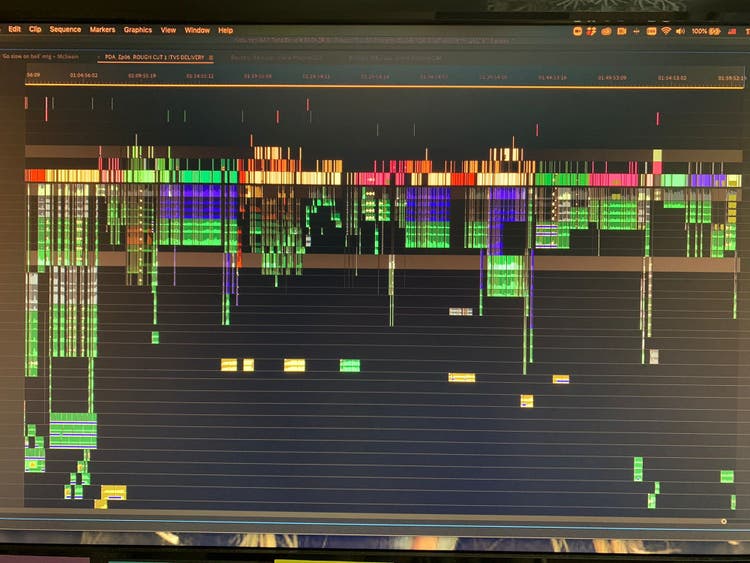
Image Source: Dita Gruze.
What’s your hidden gem/favorite workflow hack in Adobe Creative Cloud?
I’m very particular about my project timelines — I need to have the ability to navigate them fast and easily, therefore one of my favorite and most used tools during Philly D.A. was color labels. I created my own color system that made it very easy to find any particular scene on the timeline — each storyline would have its own hue and the scenes within that storyline would be labeled in the colors of that particular hue. I can’t even imagine how much time this saved for me when I had to jump back and forth between scenes and storylines that kept changing orders for months until we finalized them.
Who is your creative inspiration and why?
When I first saw Jim Jarmusch’s “Dead Man” in 1995, I was still in high school and dreaming about going to law school. After watching “Dead Man” over and over again, I can now safely say that Jim Jarmusch’s “Dead Man” is the main reason why I went to film school instead. I thought I needed to find out the secrets to making a film that is so perfect in everything — writing, acting, cinematography, editing, set design, symbolism, sound design, score — I could go on and on. I can’t say I have discovered every single secret of why Jim Jarmusch is as brilliant as he is, but he is still one of the greatest inspirations in my creative pursuits.
What’s the toughest thing you’ve had to face in your career and how did you overcome it? What advice do you have for aspiring filmmakers or content creators?
One of the hardest things was finding the path that I’m best at and most comfortable with. Film school didn’t fully prepare me for one particular career — it was a little bit of everything, so it was a lot of searching, trying out, sometimes burning out. I liked working as an assistant director or producer, but it was also incredibly stressful and physically taxing. It took a while until I found that editing is the career I’m happy to pursue for the rest of my life. For aspiring filmmakers I’d say, find the path you want to follow and stick to it, but also do the hard work to learn the craft and to excel at what you do. There are so many young and aspiring filmmakers out there and the competition at the beginning will be stiff, but if you carve your way and earn the trust of your collaborators, you’ll never be out of work.
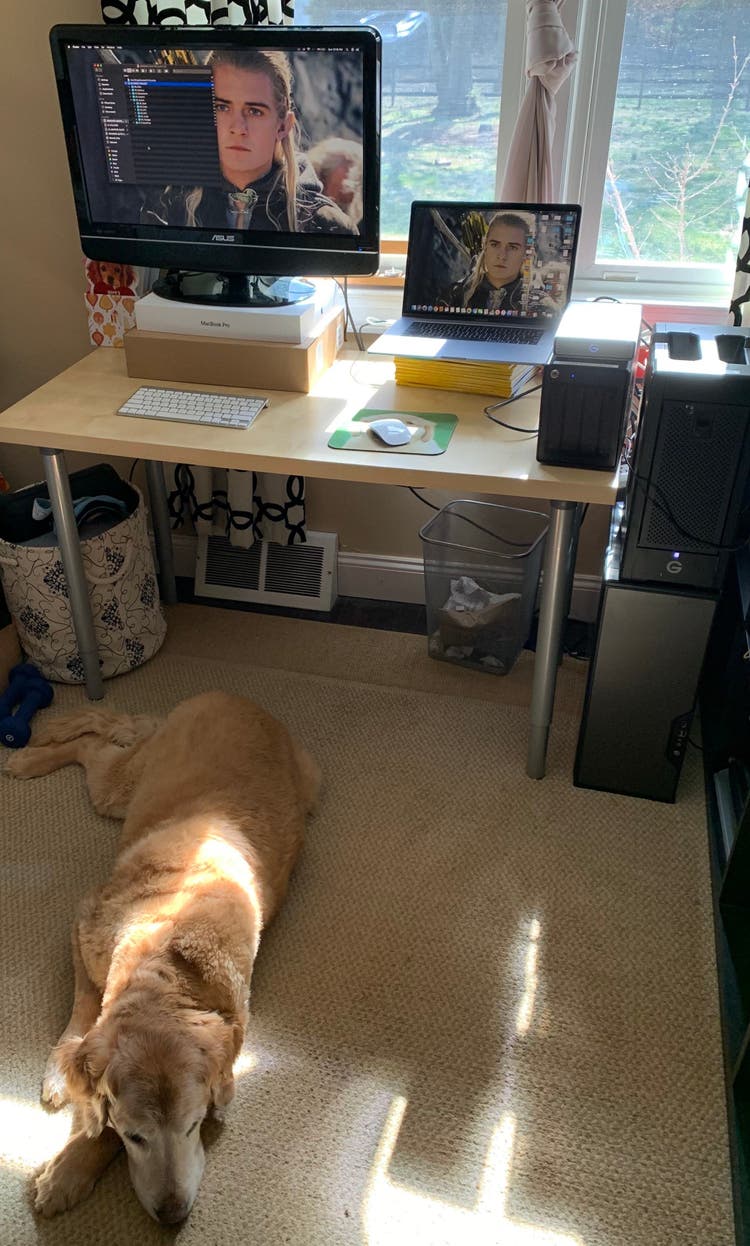
Image Source: Dita Gruze.
Share a photo of where you work. What’s your favorite thing about your workspace and why?
During the pandemic, our whole team worked from home, and my guest bedroom became my office. My workstation is against the window facing the backyard, and during the snowstorms I loved opening the drapes and curtains (I’d keep them almost entirely closed during sunny days) and see the snowfall behind my screen. It was very calming during high intensity edit days. My other favorite thing about my home office was the open-door policy for my Golden Retrievers — once in a while they’d remind me of themselves with a little nose nudge on my elbow or a loud snore. Pictured are my workstation before Philly D.A. and in the thick of it.
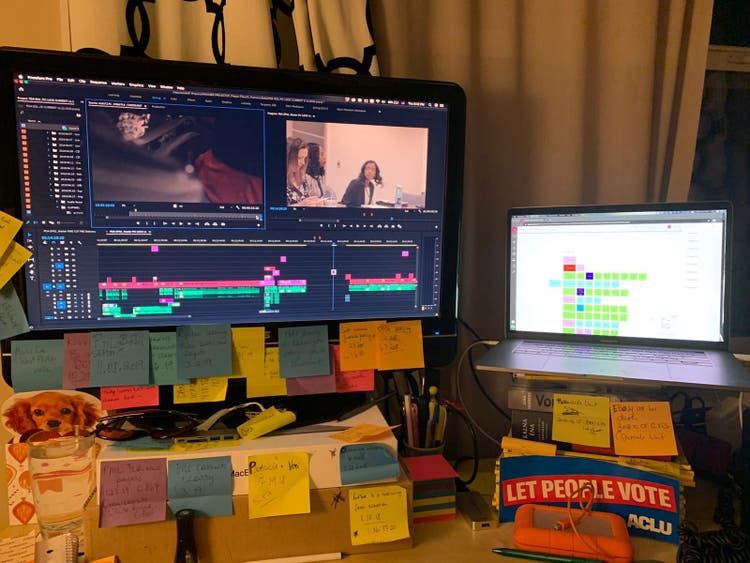
Image Source: Dita Gruze.
The finale of the eight-part Independent Lens original series Philly D.A., airs tonight on PBS’s Independent Lens and is also available to stream through June 30 on PBS Passport and the PBS Video App.